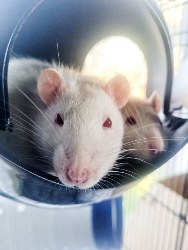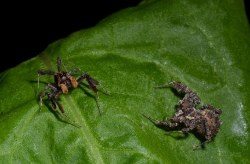
Media
Release
Date 7.11.2018
Pioneering cattle grazing block up for sale set to
become avocado or kiwifruit orchard
A portion
of a pioneering cattle grazing and fattening farm that has
been owned by members of the same family for 178 years has
been placed on the market for sale.
The 23-hectare property at Maungatapere some 11 kilometres west of Whangarei was formerly a much bigger dairy farm known as Crystal Springs which was the first pedigree Jersey stud in Northland, with a gene-poll of breeding cattle brought out from the United Kingdom.
In recent years the block and an adjacent leased farm, have been concurrently used to fatten some 200 weaned bulls at a time under contract from around 100 kilogrammes up to 370 kilogrammes. Owners Irving and Glenys Stevens are now selling up and retiring.
However, a rural land sales specialist says that the predominantly flat terrain of the Maungatapere site, combined with rich volcanic silt loam soils, a temperate climate and good rainfall, all combine to indicate the best future usage of the block would be for horticultural production rather than what has been the traditional agricultural output.
The block at 1217 State Highway 14 at Maungatapere is being marketed for sale by tender through Bayleys Whangarei, with tenders closing at 2pm on November 29. Bayleys Whangarei rural sales specialist Vinni Bhula said the evolution of cropping alternatives in many parts of New Zealand meant greater revenues could be derived from moving away from simply grazing cattle and sheep on fertile volcanic soil pastures.
Mr Bula said the conversion trend was particularly evident in Maungatapere where multiple landholdings which were traditionally run as dairy units have been converted into avocado and kiwifruit plantations over the past two decades.
“From this perspective, the State Highway 14 block could easily be adapted into an existing large avocado or kiwifruit-growing operation in the area – enabling economies of scale through the utilisation of shared cropping and packhouse facilities and resources,” he said.
“There is limited availability of suitable volcanic land in the Whangarei region now, as most of the land has already been developed into exiting orchards.”
Infrastructure on the block consists of an
old hay barn, a three-bay implement shed, a smaller
workshop, and a 140 square metre three-bedroom home
Irrigation on the property comes from a consented
79-metre-deep six-inch bore with consent to draw up to
80,000 cubic metres of water annually. Water is circulated
across the crop via a fixed sprinkler system.
Kiwifruit is New Zealand’s largest single horticultural export by both volume and value – easily eclipsing wine and apples. Kiwifruit exports accounted for $1.6 billion in sales for the year ending June 2017, with that figure expected to double by 2025.
New Zealand’s kiwifruit industry has some 2,500 commercial growers operating 3,000 registered orchards on 12,000 hectares of land. Of that, 4,600 hectares sustain the high value SunGold G3 variety which has prompted marketing co-p’ body Zespri to increase the area it intends to allocate to planting this variety from 400 hectares a year to 700 hectares a year for the next five years.
“The SunGold G3 variety is still relatively unaccounted for in Northland, so there is the potential to see this clone introduced on any new kiwifruit orchards planted in the region,” Mr Bhula said.
The 2016/17 growing season saw Zespri global sales up 19 percent from the previous year on exceptionally high cropping yields. Combined, the European Union and Japan take almost half of New Zealand’s export kiwifruit crop, with China our third biggest market for the crop.
Meanwhile, New Zealand has some 1400 commercial avocado growers – with most production taking place north of the Bay of Plenty and delivering crop year-round, but with the biggest cropping volumes coming during the summer months, Government statistics show avocados are the third largest fresh fruit export from New Zealand.
Mr Bhula said well managed
avocado orchards in Maungatapere were achieving orchard gate
returns of $45,000 - $60,000 per hectare, while well-managed
green kiwifruit orchards in Maungatapere were achieving
$60,000 per hectare, and
well-managed gold kiwifruit
orchards in Maungatapere were are achieving $120,000 per
hectare.
Whangarei district has approximately 811
hectares of land planted in commercial avocado production,
with most blocks being in the two to six-hectare range.
Meanwhile, the district has some 419 hectares of land
planted in commercial kiwifruit production, with most blocks
being in the one to six-hectare range.
Mr Bhula said there was also the potential for conversion of the 1217 State Highway 14 fattening farm into blueberry production – with potential returns equivalent to green kiwifruit levels.



 Business Canterbury: Urges Council To Cut Costs, Not Ambition For City
Business Canterbury: Urges Council To Cut Costs, Not Ambition For City Wellington Airport: On Track For Net Zero Emissions By 2028
Wellington Airport: On Track For Net Zero Emissions By 2028 Landcare Research: ANZAC Gall Fly Release Promises Natural Solution To Weed Threat
Landcare Research: ANZAC Gall Fly Release Promises Natural Solution To Weed Threat NZ Anti-Vivisection Society: Auckland Rat Lovers Unite!
NZ Anti-Vivisection Society: Auckland Rat Lovers Unite! University of Canterbury: $1.35 Million Grant To Study Lion-like Jumping Spiders
University of Canterbury: $1.35 Million Grant To Study Lion-like Jumping Spiders Federated Farmers: Government Ends War On Farming
Federated Farmers: Government Ends War On Farming



